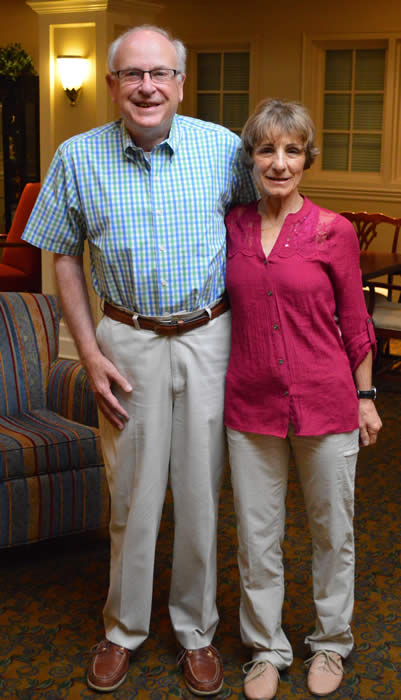NPI Certified Professional™ Profile -
Patti Tatem
The National Posture Institute prides itself on the work its certified professionals do for their clients/patients and communities. In this article we want to share the experience of one of our NPI-Certified Posture Specialists and her client. Patti Tatem and her client Preston Ratliff have worked together for some time and we were able to interview them about the work they do together.
The National Posture Institute would like to thank all our certified professionals for the work they do and we hope this example will inspire more fitness and allied-health/medical professionals to consider becoming more educated about posture, body alignment, and becoming an expert in teaching resistance training exercises to correct posture.
Interview of NPI-Certified Posture Specialist Patti Tatem and her client Preston Ratliff
1. How long have you been an NPI CPS?
I became NPI CPS on May 6, 2013
2. What are the most difficult client postural problems you've had to work with?
Helping our residents in wheelchairs realize that they also need to have good posture and body alignment. Being non-ambulatory has resulted in weakened core muscles leading to slouched, hunched over posture.
3. What's the most fulfilling part of your role as a CPS?
I feel most fulfilled as a CPS when conducting personal posture assessments, which identifies muscle imbalances and postural misalignments that a client was unaware of and showing them a plan to correct that poor posture.
4. What's the most frequent postural deviation you've encountered?
A head that hangs forward is the most widespread postural deviation that I have encountered. Forward head and round shoulders lead to far more musculoskeletal problems than people might realize.
5. What population/group do you work with most often?
As the Fitness Director for a Retirement Life Community, my clientele range in age from 65 to a “Youthful” 102.
6. What reactions have you received from clients/patients about the work you did with them?
Many feel that they literally have a new lease on life by participating and enjoying physical activities that they did years ago. I have to smile when I meet them in the hallway and they ask “How’s my 4 points of posture?”
7. How does it make you feel to be a NPI-CPS?
I have accomplished a personal goal by becoming a NPI-CPS. By obtaining this certification and the NPI-Certified Resistance Training Professional (RTP) while I worked a full time schedule has been challenging but very rewarding. I can appreciate the gratification my senior friends feel when they work through and overcome chronic injuries.
8. How do you think your clients feel about their posture now that you've worked with them?
I have heard my clients say, “You are never too old to learn”. What a great attitude! Educating a client on what correct posture looks like and the corrective exercises that will help achieve a stress free aligned posture gives the client control and confidence. Recognizing when I am in good posture and when I am not has been the single most important influence on balance issues and fall prevention here at Plantation Estates.
Preston Ratliff - Patti Tatem's Client
1. How long have you been working with your Certified Posture Specialist (CPS)?
Last 6 months, starting with 4 points of posture.
2. How did your muscles, body, and joints feel before starting with your CPS and how do you feel now?
My muscles felt tight and actually hurt, my body felt stiff, hard to move, and my joints painful.
3. How do you feel about your relationship with your CPS?
My CPS understands the problem, the procedure, and steps necessary to correct my posture issues.
4. How do you feel overall now that you've taken steps toward improving your posture?
Overall, I feel better physically and more confident mentally.
5. What improvements, if any, have you made on your posture?
The improvements in my posture have given me more mobility in my neck and my lower back pain has lessened.
6. Do you feel that your posture has improved your ability to perform daily activities and exercises?
Yes, everything from putting on my clothes to driving my car.
7. What has been the most fulfilling part of your journey?
As I continue working on my posture I feel like I will have a longer, better journey in life.
|
